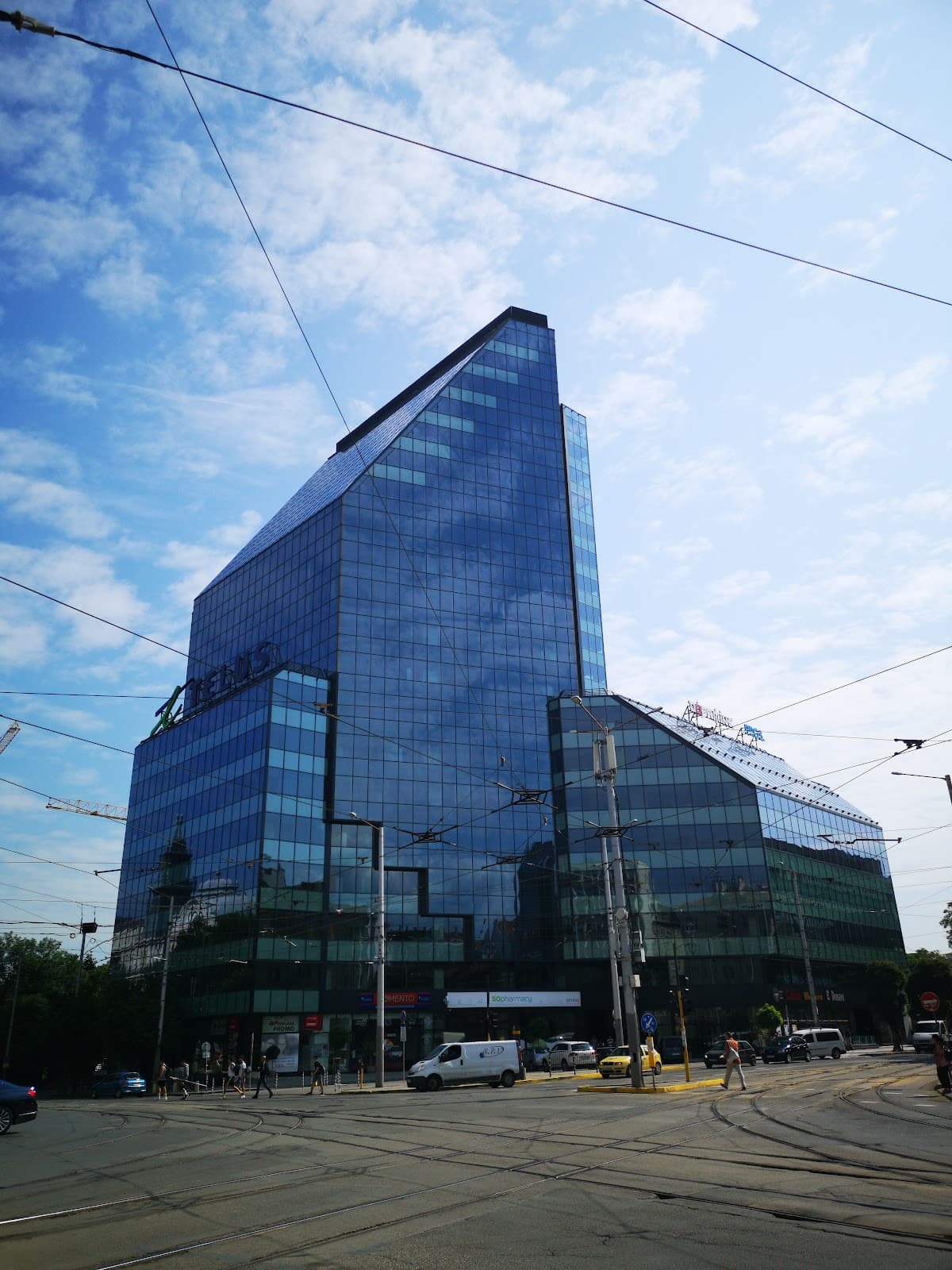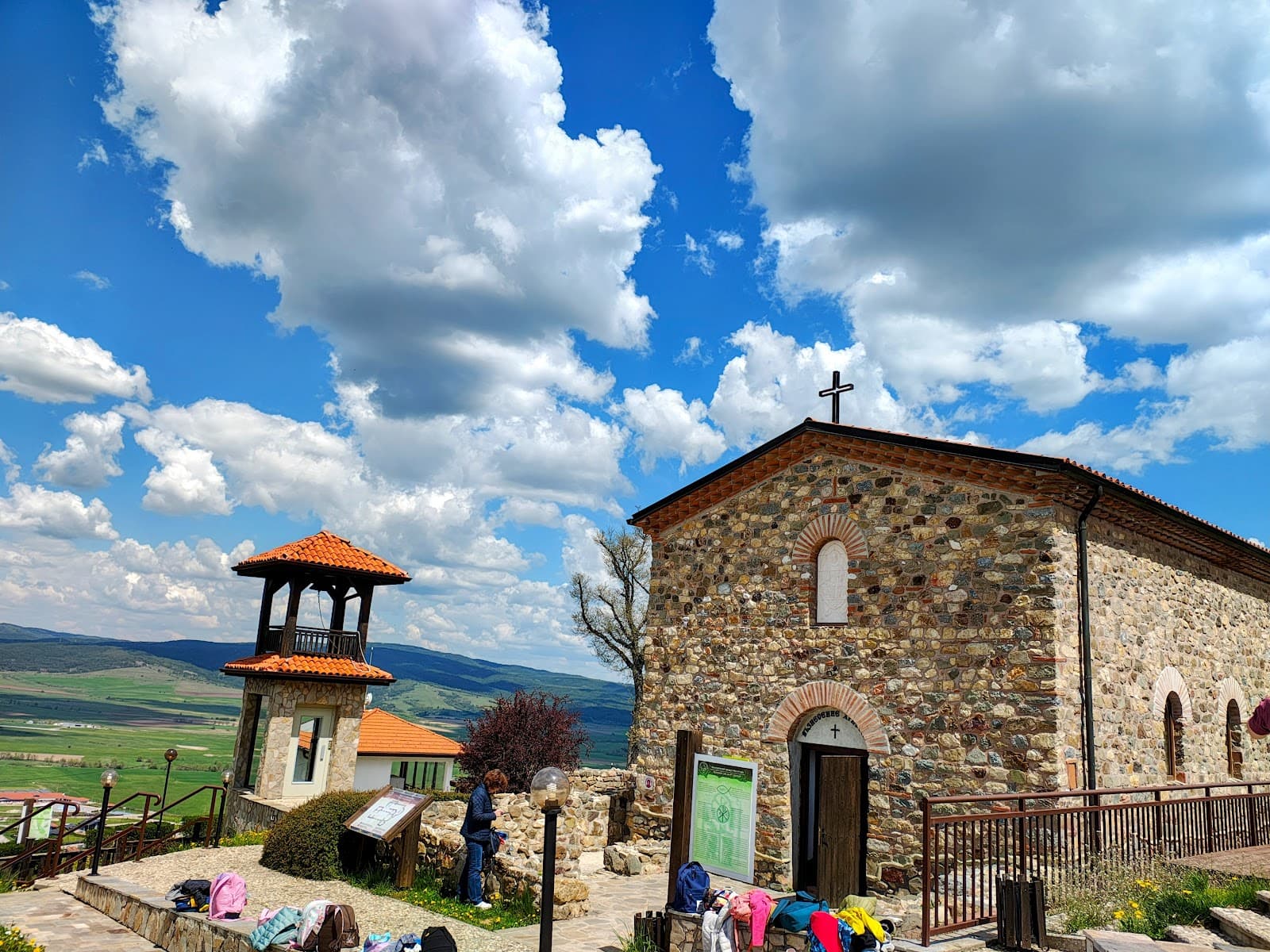
National Polytechnic Museum
Discover Bulgaria's technological past with vintage cars, early computers, and a fun Lego exhibition.

Highlights
Must-see attractions

Social
From TikTok & Reddit
Best Time
Fewer crowds, more relaxed viewing

National Polytechnic Museum
Best Time
Fewer crowds, more relaxed viewing

Highlights
Must-see attractions
Discover Bulgaria's technological past with vintage cars, early computers, and a fun Lego exhibition.
"Very interesting and well organized museum, there are many things to see, although the place is not large."

🚗 Parking Solutions
Parking can be tough. Try the nearby supermarket lot for easier access.
🗣️ Language Barrier
Most descriptions are in Bulgarian. Use a translation app for full understanding.

Highlights
Discover the most iconic attractions and experiences

Bulgarian Computers
Exhibition Hall
Discover the ingenuity of early Bulgarian computing with exhibits like the 'Pravets' computers.
Vintage Cars
Ground Floor
Step back in time with a collection of classic Bulgarian and international automobiles.

Lego Exhibition
Second Floor
A delightful surprise for all ages, featuring creative Lego builds and interactive displays.
Plans like a pro.
Thinks like you
Planning Your Visit
Navigate to the National Polytechnic Museum
Language & Exhibits
Best Times
Insider Tips
from TikTok, Instagram & Reddit
🚗 Parking Solutions
Parking can be tough. Try the nearby supermarket lot for easier access.
🗣️ Language Barrier
Most descriptions are in Bulgarian. Use a translation app for full understanding.
🧒 Kids' Fun Zone
Don't miss the kids' exploration zone and the Lego exhibition on the second floor!
💡 Appreciate the History
Focus on the development and history of Bulgarian technics.
Staying one day in Sofia what museum/art exhibition to visit?
Tips
from all over the internet
🚗 Parking Solutions
Parking can be tough. Try the nearby supermarket lot for easier access.
🗣️ Language Barrier
Most descriptions are in Bulgarian. Use a translation app for full understanding.
🧒 Kids' Fun Zone
Don't miss the kids' exploration zone and the Lego exhibition on the second floor!
💡 Appreciate the History
Focus on the development and history of Bulgarian technics.
🚶♂️ Explore the Garden
The pleasant garden outside offers a nice break after your museum visit.
What Travellers Say
Reviews Summary
Visitors find the National Polytechnic Museum to be an interesting and well-organized compact museum showcasing Bulgarian technical history, with highlights like vintage cars and a popular Lego exhibition. While the building's visibility and language barriers are noted drawbacks, the kindness of staff and the unique artifacts make it a worthwhile visit for many.
"Very interesting and well organized museum, there are many things to see, although the place is not large. You can see development and history of Bulgarian technics. I certainly recommend to visit it."
Mária Kúdelčíková
"Nice and cozy, lots of stuff, variety of industries and objects represented.
Parking is an issus - park on a nearby supermarket location, ideally."
Arunas B.
"Great exhibition. Kids exploration zone. There is also a fascinating Lego exhibition on the second floor. The 5 year old loved it. The garden outside is very pleasant."
Ivelina Dimitrova
What People Like
What People Dislike
Frequently Asked Questions
🚇 🗺️ Getting There
The museum's location isn't always obvious, so using GPS is recommended. Public transport options are available, but parking can be a challenge. Visitors suggest parking at a nearby supermarket if you're driving.
Some visitors find the building not very visible and the location inconvenient. It's best to have your navigation set up before you leave your accommodation.
While specific public transport routes aren't detailed, Sofia has a good public transport network. Checking local transit apps upon arrival is advised. Driving and parking can be difficult.
Parking is noted as an issue. A common tip is to park at a nearby supermarket location.
Yes, the museum is worth visiting for its exhibits. Just be prepared for potential navigation challenges and consider taxi or ride-sharing services if public transport seems daunting.
🎫 🎫 Tickets & Entry
Specific opening hours can vary, and it's always best to check the official museum website or local listings before your visit. Generally, museums in Sofia operate during standard daytime hours on weekdays and weekends.
Admission fees are typically reasonable for this type of museum. It's advisable to check for any special exhibition pricing or potential discounts for students or seniors.
For general admission, booking in advance is usually not required. However, if you plan to visit during peak times or for a special event like the Lego exhibition, it might be a good idea to check their policy.
While not explicitly mentioned, many museums offer discounts for children, students, seniors, or families. Inquire at the ticket counter or check their website for details.
Tickets can typically be purchased at the museum's entrance. Having some local currency or a card that works internationally is recommended.
🎫 🧭 Onsite Experience
The museum showcases the history and development of Bulgarian technology, featuring vintage cars, communication equipment, early computers like the 'Pravets', and a popular Lego exhibition.
Absolutely! Visitors rave about the 'Kids Exploration Zone' and the fascinating Lego exhibition on the second floor, which is a big hit with younger visitors.
Unfortunately, most descriptions are in Bulgarian. Visitors who don't speak Bulgarian might face some challenges understanding the details without assistance.
The museum is described as compact and not large, but it's packed with many interesting things to see, offering a good overview of Bulgarian technical history.
It's often described as nice and cozy, with a variety of industries and objects represented. Despite its size, it's well-organized and holds many amazing artifacts.
🍽️ 🍽️ Food & Dining
There are no specific mentions of a cafe or restaurant within the museum itself. It's a compact museum, so it's unlikely to have extensive dining facilities.
Given its location, you'll likely find various cafes and restaurants in the surrounding neighborhoods of Sofia. It's best to explore the area after your visit for local dining experiences.
Typically, museums discourage eating and drinking inside exhibition halls to preserve the artifacts. It's best to consume any food or beverages outside the museum premises.
Sofia offers a range of dining options, from traditional Bulgarian eateries to international fast food. Exploring local bakeries or smaller cafes can often provide more affordable choices.
Sofia offers a diverse culinary scene, including traditional Bulgarian dishes like banitsa and shopska salad, as well as international cuisine. You'll find options to suit various tastes and budgets.
📸 📸 Photography
Photography policies can vary. Generally, personal, non-flash photography is allowed for most exhibits, but it's always wise to check for any specific restrictions posted within the museum or inquire at the entrance.
The vintage car collection is often a highlight for photographers. The Lego exhibition also provides unique and colorful photo opportunities. The 'Pravets' computers offer a glimpse into a specific era of tech history.
Weekday mornings tend to be less crowded, allowing for more unobstructed shots. If you're interested in capturing the Lego exhibition, visiting when children are actively engaged can add a dynamic element to your photos.
It's generally recommended to avoid flash photography in museums as it can damage delicate artifacts over time and disrupt the viewing experience for others. Always look for signs indicating flash restrictions.
While no specific 'photo spots' are frequently mentioned, the well-preserved vintage cars and the creative Lego displays are popular subjects. The outdoor garden can also offer pleasant photo opportunities.
For Different Travelers
Tailored advice for your travel style
👨👩👧 Families with Kids
🤓 History & Tech Enthusiasts
🚶 Budget Travelers
Deep Dives
In-depth insights and expert knowledge
Exploring Bulgarian Technological Heritage
Beyond the computers, the museum boasts an impressive array of vintage cars, offering a nostalgic journey through automotive history. These exhibits, combined with other technological artifacts, provide a comprehensive overview of Bulgarian ingenuity. The museum's compact size belies the depth of its collection, making it an engaging visit for anyone interested in the country's industrial and scientific past.
While the primary language for descriptions is Bulgarian, the visual nature of the exhibits, especially the cars and the Lego displays, transcends language barriers. For those keen on understanding the nuances, bringing a translation app or seeking out any available multilingual guides can enhance the experience. The museum is a testament to Bulgaria's contributions to technology and a must-visit for history buffs.
A Family-Friendly Surprise: The Lego Exhibition
The Lego exhibition is often highlighted as a major draw, with a 5-year-old visitor reportedly loving it. This section transforms the museum from a purely historical site into a dynamic space that caters to a younger demographic. It’s a clever way to engage children and introduce them to the museum's broader themes of innovation and creativity in a fun, accessible format.
Complementing the indoor exhibits, the museum also features a pleasant garden outside. This green space provides a relaxing environment for families to unwind after exploring the museum's collections. It’s a thoughtful addition that enhances the overall visitor experience, offering a breath of fresh air and a space for children to move around freely.
Navigating the Museum: Practicalities and Tips
Parking is another aspect that requires forethought. Several visitors have pointed out that parking can be an issue. A common workaround suggested is to park at a nearby supermarket location, which often provides more accessible and less stressful parking options.
For those who don't speak Bulgarian, understanding the exhibit descriptions might be difficult as they are primarily in the local language. Bringing a translation app on your smartphone is a practical solution to overcome this language barrier and fully appreciate the historical context of the exhibits.






Social
from TikTok, Instagram & Reddit